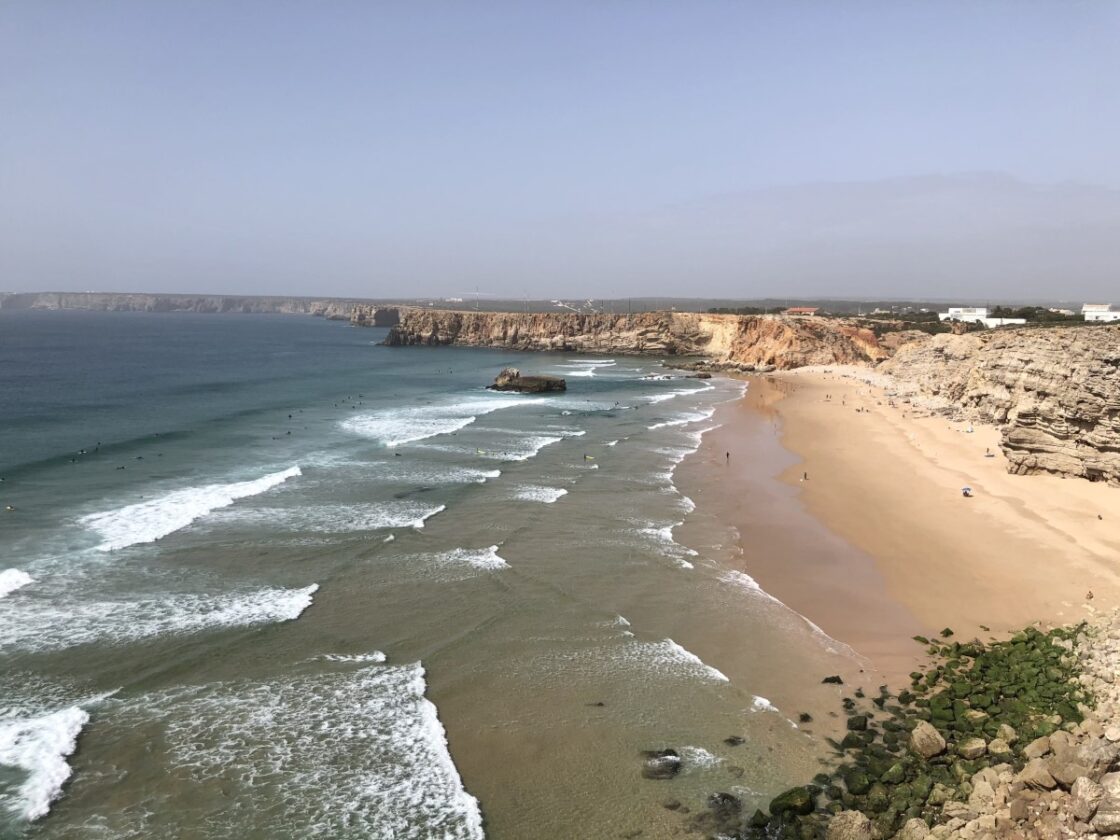An hour west or an hour south from camping Serro da Bica – either way you like – lies the Portuguese coast. South is, of course, the Algarve but arguably more interesting is the west coast just south of Lisbon.


If you avoid the highways there is an eldorado of smaller roads and tracks leading to some lost and perhaps forgotten destinations. The town of Ourique may not readily come to mind as the starting point for an exploration of the Portuguese coast, but our campsite at Serro da Bica is arguably well-situated to explore southwestern Portugal.
Heading west will take you to Vila Nova de Milfontes and then you can follow the coast south towards Sagres. But before we head that way we detour just north of the town and find a small deserted parking lot right on the pebble beach.
With nobody around except for some hikers passing through, this is always a special moment – having the place to yourself and no road signs to indicate that there is a beach here at all…






There is a national park along this coastline: Parque Natural do Sudoeste Alentejano e Costa Vicentina. Many little roads lead further west to dozens of beaches that can be found at the base of the steep, sandy cliffs.
We stopped off at Amado and Avaidos on the way, although there are many more! It is, of course, impossible to visit them all.




Praia do Amado is home to a long beach with perfect sets of waves, ideally suited to a number of surfing schools to be found there. The parking lot is also a gathering point for many campervans and what looks like chilled individuals making their way around Europe.
A little further along are the ruins of the Islamic Settlement of Ponta do Castelo. These are knee-high rocky outlines of dwellings on an abutment reaching into the ocean. A walkway facilitates a closer view of the rocky outcrop. There’s a restaurant nearby and another beach for more surfing of diving lessons.





Half an hour’s drive further south brought us towards the town of Sagres. The open and fairly flat rolling hills probably mean that there is not much in the way of shelter from the Atlantic winds, evidenced by a lack of fauna in the area.
There is a fort right at the furthest southwesterly point in Portugal. To clarify, we are not at the extreme longitude and latitude of Europe. Lisbon is further west and we are approximately in line with Faro in latitude.
Gibraltar is much further south. But this point lays claim to being as far west and south as possible in Europe. Let’s call it the Land’s End of Europe…






It shares some similarities with Land’s End Although Land’s End has an even more dramatic clifftop. They are a bit of a tourist trap, perhaps? There’s not much here besides the fort – which you need to pay for in order to enter…
We divert to the Lighthouse of Cabo de São Vicente, looking for a picnic spot in fact. The lighthouse has a similar vibe with a parking lot, a courtyard and a souvenir shop. And some views off the edge onto the breakers far down below.




Five euros lighter and a fridge magnet richer, we stop off between the two ‘landmarks’ and enjoy our packed lunch, of which the hardboiled eggs ring in memories of childhood and road trips in South Africa.






Hunger satiated and a quick swim in the chilly waters – for Victoria at least – puts us on the road heading east towards Albufeira. Very much more built-up and developed compared to the west coast. Housing projects, apartments, restaurants, highways… All the trimmings to support the local airport and the many tourists looking for some sun.




At Portimao, we head inland and north back towards our temporary abode on the campsite. As we leave the coast behind the road becomes more winding and solitary. Only a couple of trucks and some stray locals are spotted here. There are small towns, forestry and farmlands. Much more agreeable to our tastes.
This makes me think that this region makes a rather good option for exploring the southern and western coasts of Portugal. Best of both worlds, as the saying goes… Beach within reach, green hills when you will…

